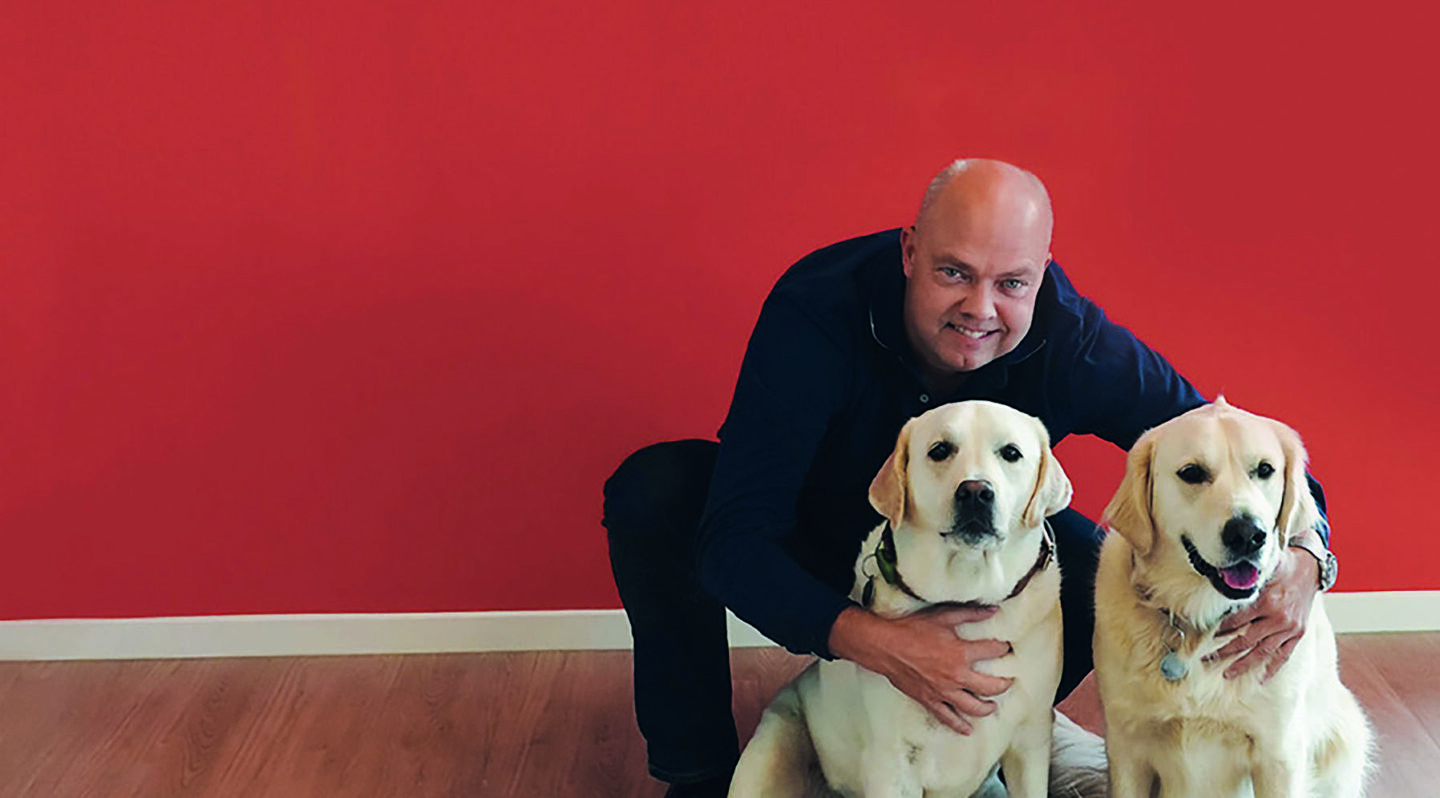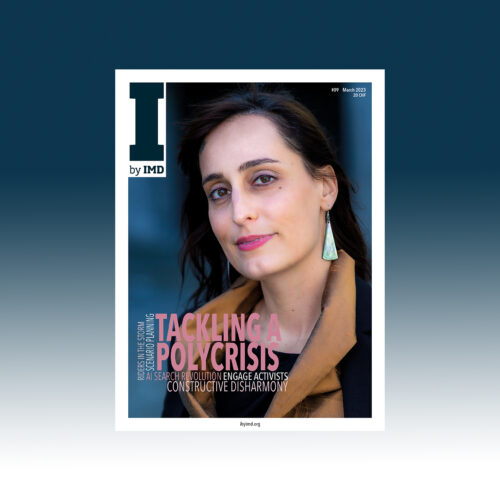
How to get sustainable business transformation right
Sustainable corporate change is a challenging feat to pull off. Julia Binder examines the barriers and drivers of change to increase your chances of success....

by Thomas W. Malnight Published April 4, 2023 in Business transformation • 17 min read
PW: The first thing to say is that Mars, Incorporated as a wider organization has always been a principles-led business. The Mars Five Principles of Quality, Responsibility, Mutuality, Efficiency, and Freedom have been deep rooted in our history, in our culture, and in the way we do business. This provides us with a strong foundation and commitment directly from our owners on which to build. So, defining a purpose wasn’t a huge leap into the unknown from that foundation, but putting it at the core of our strategy and decision making was new.
In Petcare, we defined purpose in about 2009 as “A Better World for Pets”. We printed it on the wall, and we put it on all our business cards, but it didn’t really change how we ran the business. In 2015 we made purpose an integral part of the Petcare strategy, and this was when we really started to bring it to life. At Mars we use a strategic framework called “OGSM”: Objective, Goals, Strategy, and Measures. Rather than having purpose as a separate item, we made it the objective for the segment – effectively formalizing it in our strategy and decision-making processes.
The starting point then was crystalizing what it meant to create “A Better World for Pets”. Any business we wanted to develop had to live up to this ambition. Purpose then became central to how we made choices. For example, we decided we would not go into some of the fastest-growing parts of the pet industry, like grooming. While a large and growing business, we didn’t see how it uniquely contributed to a better world for pets. Of course, grooming might be a very important part of the pet owner having a pet and might be necessary for a specific breed or as part of a lifestyle choice, but we felt there were limited health benefits. Our view was that it doesn’t make a better world for pets, so it wouldn’t be a space in which we would directly play.
We came to recognize more and more that, at different stages of their lives, the needs of pets and pet owners changed dramatically. For us to continue to ensure a better world for pets, we needed to understand and address the constantly changing needs of each key stakeholder. This led to dramatic changes not only in our portfolio of businesses, but also in how each business focused and operated.
So, rather than just treating our businesses as vertical pillars or silos, we decided that we would instead develop a holistic pet health model by looking for opportunities that delivered against our ambition.
A key element of this stage involved expanding our thinking and business model to look at it from a “pain point” perspective. We interviewed thousands of pet owners to understand the pain points they faced. For instance, there’s a pain point at adoption. How do I choose the right pet? What should I feed them? What vaccinations will they need? When illness happens where do I go for help? What can I do with my pet when on holiday? We mapped the pet parents’ journey from adoption to end of life and then analyzed how we can help to address these pain points at each step. Thinking about relationships and pain points for each key stakeholder, and how we could help to address them, was the new core to our business. This led to the next transformative stage in our evolution, moving us towards being what’s often called a “platform company”. Here, a key focus was on how we could enable and facilitate support to help key stakeholders solve critical issues.
One example could be found in our pet food businesses. One unit, Royal Canin, has focused on how nutritional needs vary across pet breeds and age, and how nutrition can be used to support pets with specific health conditions. This unit works with vets in identifying and anticipating pet health needs, often developing nutritional products well before commercial markets exist. We reinforced this focus, while also expanding how Royal Canin could work with and support other key stakeholders.
Another example is a pet adoption website that focused on how we could help address a broad array of issues for new pet owners. But we came to see this was not enough as we needed to look more broadly at the entire adoption process. Here, we identified an important need to not only look at adoption of puppies, but also how to develop a “rehome” pet platform for older pets. If you have a pet that you must relinquish for whatever reason, how can we help you avoid taking it to a shelter? Because for a pet that’s a very traumatic experience – and can be for the owner too. Our platform functions as the orchestrator of the connection between the pet’s current family and its new one, in a peer-to-peer way.

We also expanded a platform called Whistle, which originally started as a GPS locator on pet collars. We have extended it to monitor your pet’s activities and health, with functionality allowing people to seek advice. So, for example, I can go on and say, “My dog is scratching too much, what do I do?” You can then click to connect to a vet.
In this way, we widened our focus on creating an overall pet health care model, an area that has not always been professionalized and supported.
We also expanded our veterinary businesses and moved into specialty hospitals and diagnostic labs. In diagnostics, an area critical to pet health, we moved into a business that makes diagnostic machines for veterinary hospitals. In all these moves, we didn’t look at traditional industry views of businesses, we looked at the impact each business could have on the lives of pets.
In this process we also came to recognize that the personal experience of vets has not always been easy: they often graduate with very high student debts which are sometimes not paid off until they are close to retirement. We considered how to help make their lives better, working with financial institutions to consolidate and lower debt costs, while contributing to paying off these loans for all the vets in our hospitals and clinics. While not directly contributing to our bottom line, this provided an important and needed personal support to vets, who are critical players in pet health.
Another example of where we have invested is in a platform called VETgirl, a digital education platform developed by two veterinarians. Through their broadcasts they help to educate veterinarians on the latest treatments. If you work for a small veterinary clinic, access to such training can be a particularly valuable resource. This allows us to expand our support for veterinarians in helping to continue their medical education.
All of these platforms are designed based on our understanding of key stakeholder pain points over time and how we can help them address them. If we want to make “A Better World for Pets”, we need to make a better world for each of these key stakeholders. Platforms are not about making money in each individual business or activity, but rather are about supporting and growing the entire ecosystem. If the ecosystem grows, we as a company will also grow and bring our purpose to life.
So, if a business drives “A Better World for Pets”, it’s great and we will continue to focus here, regardless of traditional industry definitions. But if it doesn’t, we have no interest. This was how we moved our purpose to being central to our strategic framework and a critical part of our decision-making process.
Yes, we engaged in an immersive process called Pathfinder, which we designed and conducted with your support at IMD. Together, we developed an innovative approach to accelerate growth while exploring and shaping options for our future. Pathfinder was based on empowering our own people and talent to identify and remove current barriers and shape opportunities for that long term, sustainable growth. One key element of Pathfinder involved having highly focused conversations with selected external companies around specifically defined topics to build insights from the outside and bring them into our organization to generate fresh thinking in the formulation of a new strategy. We needed “outside-in, future-back” thinking to break internal barriers and help shape our future.

Our Pathfinder exercise engaged 20 high-potential Associates from across our business globally. They visited 30 high-growth companies across industries and around the world, which led them to identify four common themes that then helped shape our future: (1) taking an “outside-in” view of our business to continually evolve our understanding of stakeholder needs; (2) constantly looking at ecosystems as a whole and not being trapped in traditional industry definitions; (3) focusing on truly disruptive innovations and thinking, moving beyond incremental innovation traps; and finally (4) truly bringing purpose to life and putting it at the core of strategy. These Pathfinders’ insights challenged our PLT, and our whole organization, to identify and pursue fundamentally new ways of looking at our business.
Many of these Pathfinders continue to play important roles in each of our businesses. Their insights and challenges have helped transform how we look at each of our businesses and led us to rethink much of it. This process was important in recognizing purpose as integral to our strategy, collectively owned by our PLT. In short, the Pathfinders helped us to turn purpose from being a nice word into being the foundation for shaping our strategy and our future.
In the beginning we needed to simultaneously build momentum and credibility. We made a couple of big acquisitions outside of our traditional business areas – but clearly in line with our purpose. When you do this, people below the leadership suddenly start thinking, “Holy smoke! These guys are serious.” So, people immediately saw that this was more than idle talk and that action followed. We then needed to immediately follow up with other actions and constantly communicate our journey to engage and begin to mobilize the rest of the organization. People need to see that management walks the talk but also that this journey is something that they can engage in and contribute to. It’s not enough to talk about good intentions or use nice words, it is also important to make everyone a part of the journey from the start.
From the start we also needed to reframe how we thought about our business model – moving away from a one-size-fits-all traditional FMCG business model that had focused on individual businesses but which was also no longer going to work as we moved into interconnected services, technologies, and activities within and across individual businesses. As I’ve explained, our purpose-driven strategy looked beyond individual pillars to this idea of operating across the entire pet ecosystem. This meant that we were going to get into very different businesses with very different relationships with all our stakeholders. While this shift from transactions to relationships was critical in our strategy and transformation, it was also a source of a lot of discussion about demonstrating the potential of our transformation and the challenges we would face as we moved beyond how we had traditionally managed our businesses.
The PLT was incredibly important in bringing this journey to life, as any leadership team shapes the energy and focus of the entire organization. We had been organized and led by traditional functions and geographic business units central to our core legacy business. We had leaders focused on manufacturing, marketing, regional businesses and the like. That meant the PLT was focused on manufacturing efficiency and results of individual businesses and geographies – a far cry from focusing on our collective purpose. We had to make the PLT the strategic visionaries and champions of our entire business, not just the defenders of their roles and silos. So I had to radically change the size, composition, and focus of the PLT. We focused the team on being the “Courageous Architects of our Future”, which we later defined as their collective team purpose.

Geopolitical tensions, persistent inflation, economic weakness, climate change, and sustainability. Business leaders are dealing with an unprecedented range of challenges simultaneously, making it harder than ever to know how to prioritize, navigate, and communicate effectively with teams. Scenario planning, listening and leading in new ways are part of the answer. In Issue IX of I by IMD, we unpack new approaches to dealing with the polycrisis that's facing us.
We went from having 14 members of the PLT to eight, which now includes the leader of each business area as well as finance, human resources – which we call People & Organization, or P&O – and corporate affairs. Finance was there to help plan and shape future businesses and choices, and to help take normal budget discussions out of our PLT meetings. P&O was there to make sure we continually built the team, culture, and capabilities we needed across all levels of the organization. Corporate affairs focused on bringing our purpose to life within and outside the organization and building it into our core narrative. We also created a new unit, that we initially called Connected Solutions, which was very small in revenue terms, but whose role was to focus on thinking about how we could radically transform, disrupt and digitalize the business. It was one of the most active in our PLT discussions, both when it came to new opportunities and challenging the thinking of other businesses.
That was another major challenge we faced. In my experience, whenever you undertake a transformation, the legacy business can be an initial blocker. In our case, we had a $10 billion pet food business that didn’t feel loved, that did not see themselves at the center, since investments were being made elsewhere. They asked questions about their role in this change. Of course, we continued to invest heavily in factories and brands, but these investments were not the ones that were talked about. Even among our leadership team, you’d have the head of some traditional businesses saying, “I’m just funding all your fun.”
And behind that cynical remark, there was, of course, a grain of truth. This was very hard for them to understand and accept, and this led to resistance. Unfortunately, it took us a few years until we developed new business models for our legacy pet food business as well. It is interesting though that, over time, they became a critical, central focus of our purpose strategy. For us, our legacy pet food business touches 400 million pets and their owners, far beyond our reach in any of our other businesses. But it took us time to tap into this strength and move beyond just selling them our traditional products. In the end, these relationships with pet owners are probably some of our most valuable assets in bringing our purpose to life.
In terms of the hard financial metrics, we obviously track them all. We monitor how each activity and business is performing, and how they contribute to our whole Petcare business. But we have learned to avoid only looking at each business individually and to be dependent on traditional financial metrics. This would be the death of our whole strategy and model.
I know that working towards a purpose has broadened and redefined the scope of our business and has led us to different growth paths than if we had not organized around our purpose. But it’s not a linear approach. It’s an approach that says, “I’m thinking differently about what business I’m in – and because I define the businesses that I’m in differently, I need to operate different growth models and a different way to think about metrics.”
Platforms are not about making money in each individual business or activity, but rather are about supporting and growing the entire ecosystem
That said, we do focus on how we can create and capture soft and hard value and are constantly building and tracking specific measures for all activities. We constantly think about metrics and impact and what we are doing to bring our purpose to life and build an organization within and across all of our activities.
Let me give you a current example we are struggling with, and an important metric that we may never completely accomplish: ending pet homelessness. We think it is important because we don’t just want to make a better world for the pets we serve, but for all pets. And the ambition is huge. Working with partners, for the first time ever, we are figuring out how to measure the number of homeless cats and dogs across 20 countries. As a result, we estimate there are about 225 million homeless pets – so we’re working together with external partners and NGOs on adoption programs, feeding programs, spay and neuter, and so forth. It’s a huge purpose-focused program and one of our big stories and metrics. While we may never fully succeed here, we need to be part of addressing this important issue for pets globally.
In general, I’m a big fan of measurements. But I’m not a fan of assuming measurement gives you answers. I am especially not a fan of being driven by short-term financial metrics and using them to run your business. I think you need a degree of pragmatism. You should obviously measure what you can measure and move well beyond being trapped in classic financial spreadsheets. When you measure things, it enables you to ask better questions, which allows you to shape how you move forward. This allows you to look forward, not just try to evaluate the past.
One of our strong objectives and key advantages is to remain private in a company that prides itself on its values. We know that Petcare is a source of immense pride for the family because who wouldn’t want to create a better world for pets? I can talk to our owners for hours about combating loneliness, about how our pets are great companions, about being stressed at home and how pets reduce stress and anxiety. Our purpose deals with important issues of day-to-day life. The point is, if our owners feel that pride while we deliver results, that’s a win-win.
Now, if I’m in a publicly listed company, many shares are owned for only very short periods of time and you can’t really talk with, or even identify, your owners. In these companies, several charismatic and well-intentioned CEOs can write great books and give great speeches, but what can they accomplish in the long term without the real support of owners?
The question for me is how you have an authentic purpose and how you have a purpose that is built on a relevant, human truth at its core, not just fancy words that justify or try to make attractive the business you are already in.
A strong purpose has as its foundation a significant impact touching the lives of different stakeholders, which means it is based on relevant external criteria, not protecting or promoting internal interests. Too often we only think about value through internal lenses of whether some action helps me, my business, and my financial performance. These are not the right lenses. Often, relevance suggests that you are creating true value and impact outside, where it is often more difficult to measure.
One way I have looked at this is my own LinkedIn account. When I put out a purpose story, I get 10 times more reactions than when I put out a story on a new product or service. I recently posted a picture from our vet business in Holland where two dogs are licking my face in the office, while we are sitting on the floor together. I went for a walk with our local leader with his dog and he said, “Why don’t we just put it on LinkedIn and see what happens?” I labeled it “Wonderful day in the Netherlands. My job is to create a better world for pets. Pippa and Diede create a better world for me today at my office!” I soon had over 140,000 views and over 850 reactions from people who could relate.
From my experience, a purpose must be built on a truth and must have meaning beyond the left brain. It should be grounded in making a difference in people’s lives, not just promoting your business. And it should shape your future, not just justify or enhance your past. Purpose should have true meaning for all your stakeholders.
At a Mars, Incorporated level our challenge wasn’t to invent a purpose, but how to take over 100 years of our history and use it to articulate a purpose that could connect our diverse businesses and resonate with our people – but one that conveyed how we had always approached how we did business. The work that we had done in Petcare acted as inspiration and input into that work.
Our corporate purpose – “The world we want tomorrow starts with how we do business today” – is our way of articulating what we’ve already been doing as a business. Ultimately, our purpose is the first question that will be asked on every business decision. We want to facilitate a culture that encourages people to think beyond today, and really think about tomorrow. It’s a rallying cry for all our associates and it’s something that makes the owners of the business proud.
My advice to anyone looking to bring purpose into the heart of what they are doing is simple: it has to be authentic; it has to unify and speak to the mission you are already on and ultimately be grounded in the contribution you want to make to the people your business serves and your wider stakeholders. It isn’t separate to your strategy: it is your strategy.
This is an abridged and edited version of transcripts of two conversations Weihrauch conducted with Malnight – one before Weihrauch became Mars, Inc Chief Executive in the third quarter of 2022, and the other shortly after he assumed that role.

Professor Emeritus of Strategy and General Management
Thomas W Malnight is Professor Emeritus of Strategy and General Management. His fields of interest are strategy, leading and accelerating transformational organizational change, and the role of purpose in redefining businesses and their impact on society.

May 12, 2025 • by Julia Binder in Business transformation
Sustainable corporate change is a challenging feat to pull off. Julia Binder examines the barriers and drivers of change to increase your chances of success....

March 26, 2025 • by Didier Cossin, Yukie Saito in Business transformation
Hannele Jakosuo-Jansson, Executive Vice President of People and Culture at Neste – the world’s largest producer of renewable diesel and sustainable aviation fuel (SAF) – and a board member of Finnair, has...

March 7, 2025 • by Michael D. Watkins in Business transformation
To ride the daunting wave of global economic change, CEOs must first understand their operating environment and then ensure the priorities of their leadership team are aligned, advises IMD’s Michael Watkins...

January 22, 2025 • by Patrick Reinmoeller in Business transformation
In the face of growing competition from BYD and Tesla, Honda and Nissan's large merger wager may not be sufficient to bridge the gap. Thinking outside of the box may be essential...
Explore first person business intelligence from top minds curated for a global executive audience